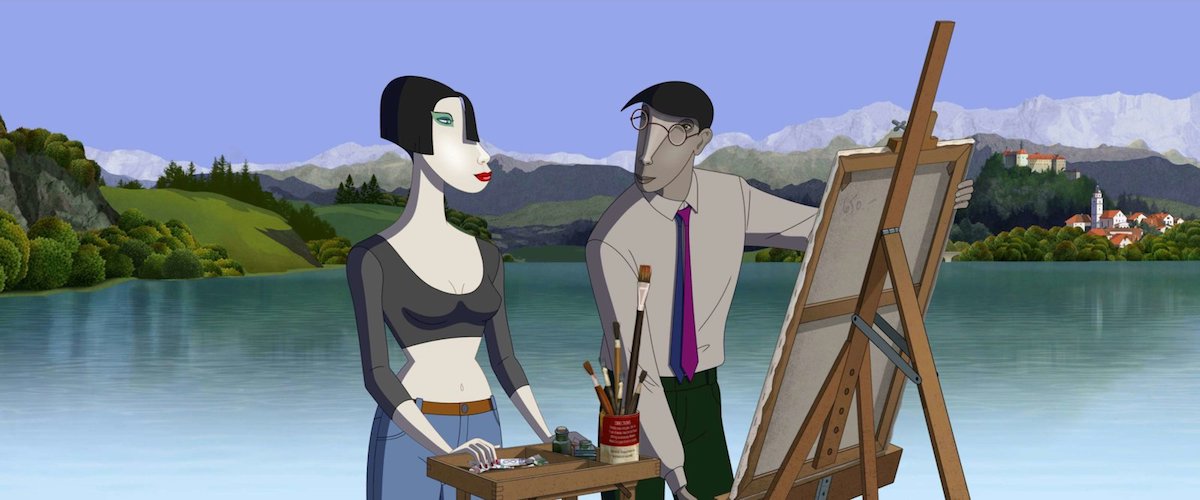Locarno Film Review: ‘Ruben Brandt, Collector’
By Alissa Simon
LOS ANGELES (Variety.com) – “Possess your problems to conquer them.” That’s the credo psychotherapist Ruben Brandt preaches to his criminally-inclined clients in this stylish, fast-paced, English-language animated thriller for adults. But when Brandt’s patients help him to apply his own advice, he becomes “Ruben Brandt, Collector,” ringleader of a gang responsible for the theft of 13 of the world’s most famous paintings. In this entertaining romp, his fiction feature debut, multi-hyphenate Milorad Krstić literally puts the ”art” in “arthouse,” using 2D and 3D animation techniques to depict the tropes of film noir and action-adventure, all the while paying clever homage to the worlds of film and fine art. Further festival play is a given, with niche distribution a solid bet for most territories.
Brandt (Iván Kamarás) is the offspring of an East German émigré whose knowledge of subliminal programming with 16mm film was exploited by the CIA — and used to experiment on his own son. Since the recent death of his father, Brandt is troubled by powerful auditory and tactile hallucinations in which characters from famous paintings attack him. For example, in one nightmare, the Infanta Margarita Teresa from Diego Velázquez’s masterwork sinks her sharp teeth into his arm; in another, Sandro Botticelli’s Venus uses her long, golden tresses to pull him to the depths of the sea.
Clearly, poor Brandt needs help — and who better to provide it than his grateful patients, a genial group of recuperating ne’er-do-wells led by the wily kleptomaniac Mimi (Gabriella Hámori), who combines the acrobatic skill of Fantomas with the seductive persona of a modern-day Marlene Dietrich? Also pitching in is Bye-Bye Joe (Matt Devere), a brawny, overly loquacious, celebrity bodyguard; Fernando (Christian Niels Buckholdt), a computer whiz who can’t resist leaving his signature tag every time he accomplishes a security breech; and Membrano Bruno (Henry Grant), a rotund bank robber.
Soon, the Louvre, the Musée d’Orsay, the Tate, the Uffizi, the Hermitage, New York’s MoMA, and Chicago’s Art Institute all lose some of their most prestigious holdings. As the reward for the recovery of the missing pictures rises to a cool million, handsome, hard-boiled detective Mike Kowalski (Csaba “Kor” Márton) battles mobster Vincenzo (Butch Engle) and his sinister henchman to be the first to discover the identity of the man whom the press dubs “The Collector.”
But Kowalski, a collector himself (his aggregation of unusual movie memorabilia will amuse film buffs), has more in common with Brandt than he realizes. Part of the film’s fun is the eventual solving of Kowalski’s identity.
Slovenia-born, Budapest-based helmer Krstić is a painter and multimedia artist. His first short animation, “My Baby Left Me,” nabbed a Silver Bear at the 1995 Berlinale. His encyclopedic knowledge of art history and love for world cinema shines through every frame of the hand-drawn film. Close viewing yields numerous references, from Dalí to de Chirico, Eisenstein to Hitchcock (the suspense master’s iconic profile shows up in some unexpected places), and Elvis (à la Warhol) to Rocky. Most of the characters sport faces that would be right at home in Picasso’s cubist period and even the title character’s name references Rubens and Rembrandt.
While Krstić is especially good at providing noir atmosphere (jazzy, smoke-filled dives, ominous shadows, and references to Mike Hammer films), he positively excels at high-octane action. The film opens with a near-10-minute chase through the streets and across the buildings of Paris that spills onto the boats of the Seine. Later, a breathtaking getaway sequence on the motorway is choc-a-bloc with movie references. Finally, an ingeniously choreographed session of performance art not only sends up some of that genre’s excesses, but attains the frenetic grace of a soccer game or display of martial art.
An evocative score by Tibor Cari, spiced with selections from classical recordings and hipster versions of cult classics, perfectly suits the action. The version screened in Locarno is the international version. A version with Hungarian dialogue will open domestically on Nov. 15.

